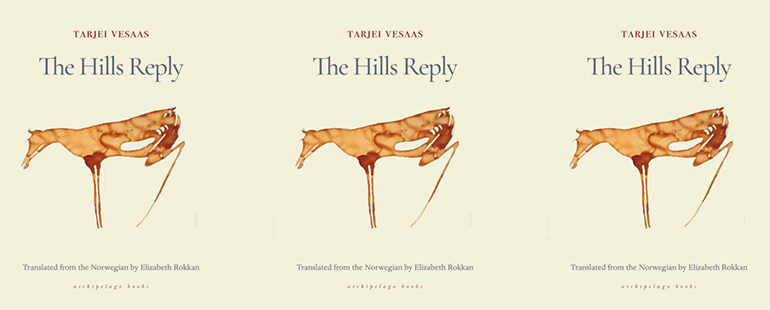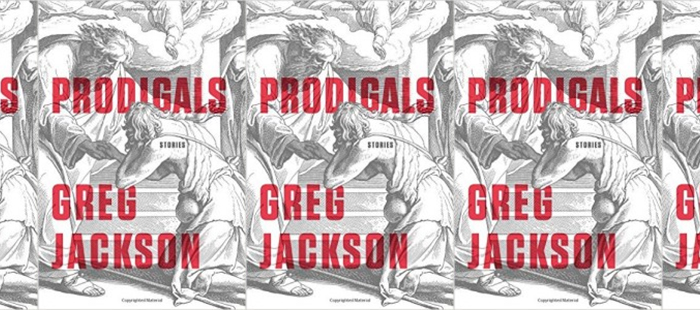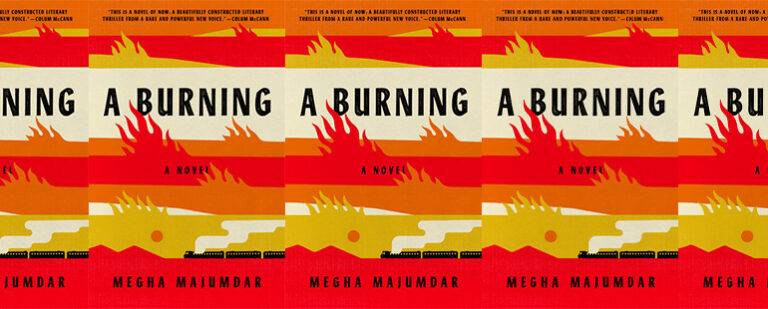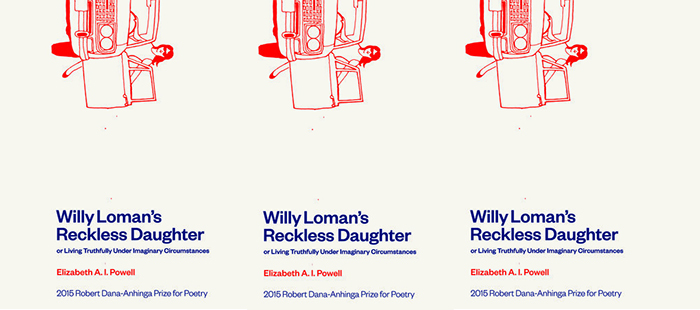The Hills Reply by Tarjei Vesaas

The Hills Reply
Tarjei Vesaas, translated by Elizabeth Rokkan
Archipelago | December 10, 2019
A perennial contender for the Nobel Prize in Literature, the Norwegian writer Tarjei Vesaas (1897-1970) spent most of his life in the countryside of his native Norway, where he owned a small farm near the village of Midtbø. His most famous works, among them The Ice Palace and The Birds, are quiet tragedies of rural life, combining symbolic descriptions of nature and the flensed Norwegian landscape with a Bergmanesque obsession with humanity’s greatest psychic wounds, among them guilt, death, isolation, and faithlessness. His fictions tend to revolve around both a sense of rural solitude and the halting though heroic attempts of his protagonists to process their pain with the simple tools available to them—a process that often entails a remaking of language.
Though Vesaas’s books are typically easily recognizable as novels, his final work, The Hills Reply, plays fast and loose with the constraints of fiction. A series of impressionistic vignettes interspersed with poetry, the book is a lyrical restitution of the past, evoking scenes from Vesaas’s childhood and other moments of rural life. It’s a book full of cupreous dawns and the placid asterism of freshly fallen snow; its days are marked by “the hanging weight of fresh moisture,” its nights by the “walls of old summer lofts,” with their “odor of gently disturbing dreams that never came to anything.” Plot seems to have been sublimated entirely. Instead of stories, there are moments extended indefinitely (a sunset becomes a lengthy vision) and motions resigned to (a nameless drifter spends twenty pages floating downriver in existential solitude).
The collection begins with “As It Stands in the Memory,” a reminiscence of the narrator working alongside his father one wintry day, clearing snow with the aid of a horse. The task is frustrating, and when analyzing his emotions, the narrator butts up against a depleted lexis. His ruminations are centered on basic interrogations of language: prepositions are turned over meticulously like curious stones, hefted and palpated, read and reread. “What are we thinking?” the boy asks, only to settle on a gnomic answer: “Out of something. Perhaps out of this.” This attempt to spin meaning out of the tares of language is typical of Vesaas; bare images become building blocks, as when the father, an inscrutable sobersides, snaps at the boy: “He has a curious sensation: what seemed to be a dark wall opening—and his father stepping out of it to speak words of stone to his child.”
The limpidity of Vesaas’s language is in part an attempt to reflect nature, to avoid mangling it with any too complex lyricism. “In the Marshes and on the Earth” describes an outing made by a boy to spy on the cranes that gather to dance in a marsh. A small disquisition on sight and perception, the vignette is full of vivid imagery—in each hollow made by the feet of passing creatures, for instance, “there is a tiny puddle,” as if “the marsh had been given a thousand eyes.” Burrowing into the marsh, the boy becomes a single eye himself, the better to “mirror the shy, pure crane.” Vesaas’s point, it seems, is that mirroring is all there is—the cranes remain unfathomable, offering no explanation of themselves, save that which the boy “invented in [his] perplexity.”
In all of Vesaas’s work, there is something fantastical about nature. Snow, for instance, has a tendency to accrete architecturally (his most famous work, The Ice Palace, centers on the titular edifice, a frozen stillicide cast up by the icy spray of a waterfall). In “Spring in Winter,” a young woman waiting for a boy finds that the snow settling on her has transformative powers: “I mustn’t move, she thought. I want it like this. Not to be snowed under, but I’ll look different, and that’s what I want.” The changes wrought by the piling of snow approach fantasy; the white drift rising on the girl’s “boyish cap” becomes a “snow crown,” and the snow falling on her “build[s] her up into towers and spires.” There’s a graceful irony in the situation, that the fleeting stuff of snow should turn steady with stacking, forming spires and towers and edifices.
Vesaas’s language is rich and thickening, replete with extended metaphors that are visionary, haunting, and half-mad, recalling the ebullient, runaway brushwork of Van Gogh. “The Wasted Day Creeps Away on Its Belly” imagines the day itself slinking shamefully out of existence, “creep[ing] on its belly out of the room” and filtering down through the world, insinuating itself into “the wilderness . . . the upper reaches of the lakes,” and “between the blocks of stones in ancient mountain slides.” In a sense, the metaphor is a way of reifying loss, of grasping a missed opportunity. Vesaas is obsessed with echoes of absence, in a way that brings to mind the work of the Estonian composer Arvo Pärt, whose ethereal brand of holy minimalism and composing style, tintinnabulation, is attuned to the silent tolling of the world.
Perception, in The Hills Reply, is microscopic, obsessive. “Just Walking Up to Fetch the Churn” is a minor eclogue, deftly capturing the dandelion-drift of joy. The titular activity is a site of hazy mystery for Vesaas, who frequently ponders the miracles of small moments, drawing them out until they wave languorously like banners of silk. When, in the midst of fetching his churn, the boy spies a girl walking along the road “long-legged, as if stepping in tall grass,” he’s struck with the “strong awareness of being part of it all,” of belonging to the endless cascade of experience. Vesaas is a master of limning these dewy, suncast moments; beneath the pressure of his pen, they turn watery and wavy, as though glimpsed in the half-mirror of a pool of water.
And yet, a certain darkness inheres in the collection, a transcendental blues. Despite the sinuous weave of his language and the loving attention he bestows on the natural world, Vesaas remains somehow distant from it all, achingly separate. The great beauty of The Hills Reply lies in the opportunity we have to witness Vesaas’s struggle, his bashing of his head against the haziness of the world, aware that there is a mystery he will never grasp, a secret he can only trace in the dark mirror of metaphor. “If there is a heart here, it is lonely,” he writes at one point. “The heart grows lonely; that is how it was created. It grows finally into its true self.”


